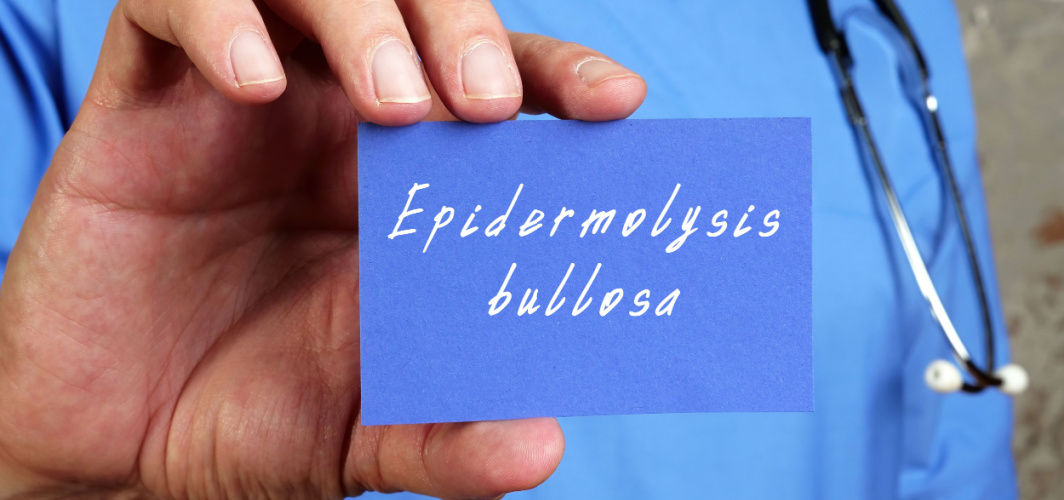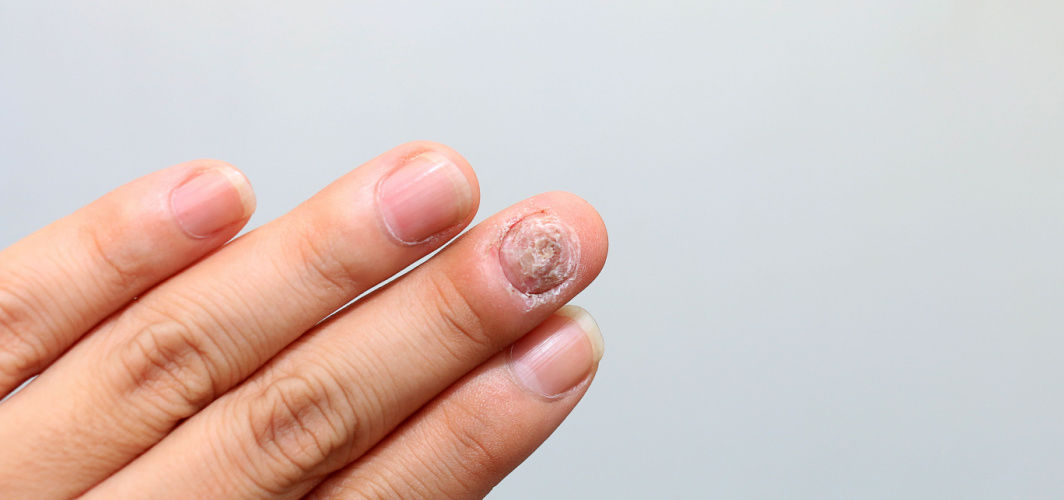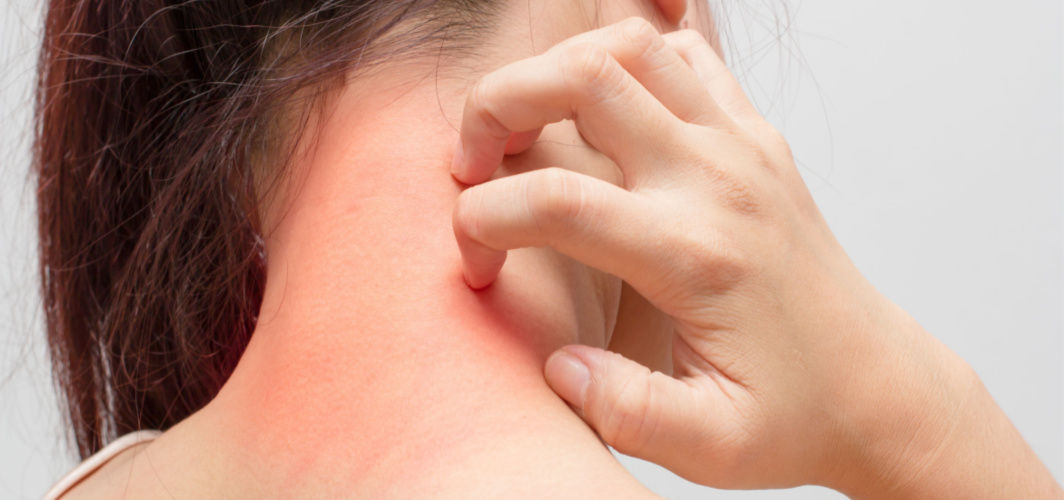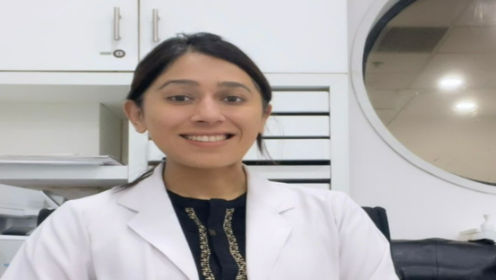Skin Care
Epidermolysis Bullosa (EB): Causes, Symptoms, Treatments & Prevention
9 min read
By Apollo 24|7, Published on - 29 September 2023
Share this article
0
0 like

Epidermolysis Bullosa is a rare genetic disorder that affects the skin and mucous membranes, causing them to be extremely fragile and prone to blistering. The impact of EB on individuals can be devastating, as it causes chronic pain, disfigurement, and complications that affect daily life. Let's learn more about this condition in this blog.
What is Epidermolysis Bullosa?
Epidermolysis Bullosa is a rare genetic disorder that affects the skin and mucous membranes. It is characterised by extremely fragile skin that blisters and forms painful sores with even minor friction or trauma. The condition is caused by mutations in the genes responsible for producing certain proteins that help anchor the layers of the skin together. There are four main types of EB:
- Simplex: Simplex EB is the mildest form and causes blistering in the top layer of the skin.
- Junctional: Junctional EB affects the deeper layers of the skin.
- Dystrophic: Dystrophic EB is more severe and can lead to scarring, deformities, and internal complications.
- Kindler Syndrome: Kindler syndrome is a rare form that involves blistering and skin fragility along with sun sensitivity.
Causes of Epidermolysis Bullosa
In this section, we will delve into the causes of Epidermolysis Bullosa.
1. Genetic Factors
EB disease is primarily caused by genetic factors. It can be inherited in an:
- Autosomal dominant
- Autosomal recessive
- X-linked manner
2. Mutations in Certain Genes
Genes such as COL7A1, LAMB3, and KRT14 are commonly affected in different types of EB. These genes play a crucial role in the production of collagen and other elements that maintain the structure and strength of the skin.
3. Role of Collagen and Anchoring Fibrils
Collagen is a protein that gives strength and elasticity to the skin. In EB, mutations in genes affecting collagen production lead to weakened or absent anchoring fibrils, which are responsible for attaching the layers of the skin. This results in the formation of blisters and erosions.
Symptoms of Epidermolysis Bullosa
The symptoms of EB can vary depending on the type and severity of the condition. Here are some common symptoms associated with EB:
1. Skin Blistering and Fragile Skin
Individuals with EB have extremely delicate skin that is prone to blistering even with minor friction or trauma. Blistering can occur on various parts of the body, including hands, feet, elbows, knees, and even inside the mouth.
- Superficial and Deep Blistering: EB disease can cause both superficial blisters, which are fluid-filled blisters on the surface of the skin, and deep blisters that extend into deeper layers of the skin. Superficial blisters often heal without scarring, while deep blisters may result in scarring and contractures.
- Wound Healing Challenges: Due to the fragile nature of the skin, wounds in individuals with EB can be slow to heal and may require specialised wound care. Chronic wounds may increase the risk of infection and further complications.
2. Pain and Discomfort
Blisters and open wounds can be painful for individuals with EB, especially if they occur in areas where there is constant friction or pressure. Pain management strategies, such as topical or oral medications, may be necessary to alleviate discomfort.
3. Oral Manifestations
EB can affect the oral cavity, causing blistering and scarring in the mouth, tongue, and throat. This can lead to difficulties in:
- Eating
- Swallowing
- Maintaining proper oral hygiene
How is Epidermolysis Bullosa Diagnosed?
Diagnosing Epidermolysis Bullosa is crucial for timely treatment and preventing complications. Here are some methods to diagnose this disorder effectively.
1. Physical Examination
A physical examination and assessment of the patient's medical history are the initial steps in diagnosing EB. The doctor will examine the skin, nails, mouth, and other affected areas to identify characteristic signs and symptoms. They will also inquire about any family history of EB or other related skin disorders.
2. Skin Biopsy and Genetic Testing
To confirm the diagnosis, a skin biopsy may be performed. During this procedure, a small piece of skin tissue is removed and examined under a microscope. This helps determine the type and severity of EB present.
Genetic testing also plays a crucial role in diagnosing EB. It involves analysing DNA samples to identify specific gene mutations associated with the condition. This testing not only confirms the diagnosis but also helps determine the type and subtype of EB.
Treatment of Epidermolysis Bullosa
Living with EB can be challenging, but there are several Epidermolysis Bullosa treatment options available to help manage the symptoms and improve quality of life.
1. Use of Topical Medications
One of the main treatment approaches for EB involves the use of topical medications. These medications are applied directly to the skin to provide relief and aid in the healing process. Here are two common types of topical medications used for EB:
- Antibacterial Creams and Ointments: Due to the fragile nature of the skin in EB patients, open blisters and wounds can easily become infected. To prevent infections, doctors often prescribe antibacterial creams or ointments. These medications help to kill bacteria and reduce the risk of further complications.
- Anti-inflammatory Treatments: EB can be quite painful, especially when blisters rupture or wounds occur. To manage pain and inflammation, doctors may recommend anti-inflammatory Epidermolysis Bullosa treatments such as corticosteroid creams or ointments. These medications help to reduce swelling and discomfort associated with the condition.
2. Nutritional Support and Dietary Modifications
Here are some treatment options that focus on nutritional support and dietary modifications to ensure proper nutrition:
- Calorie-dense Diets: People with EB often have increased energy needs due to the body's efforts to heal wounds. Consuming a calorie-dense diet can help meet these increased energy requirements.
- Protein-rich Foods: Protein plays a vital role in wound healing and tissue repair. Including protein-rich foods such as lean meats, eggs, legumes, and dairy products can help promote healing and prevent muscle wasting.
- Vitamin and Mineral Supplementation: People with EB may have difficulty absorbing certain vitamins and minerals due to compromised skin integrity. Supplementation with vitamin A, vitamin C, vitamin E, zinc, and iron may be recommended to ensure adequate intake.
3. Dressing Techniques for Blister Protection
Here are some techniques for blister protection:
- Gentle Wound Cleansing: Use mild cleansers and lukewarm water to clean the affected areas.
- Non-adherent Dressings: Opt for non-stick dressings to prevent further damage to fragile skin.
- Soft Padding: Apply soft padding around the dressings to minimise friction and pressure.
- Specialised Dressings: Hydrocolloids, hydrogels, and silicone dressings can protect blisters and promote healing.
4. Pain Management Strategies
Pain management for individuals with Epidermolysis Bullosa (EB) requires a multifaceted approach, considering the chronic nature of the condition and the potential pain associated with blistering, wound care, and complications.
- Topical Anaesthetics: Creams or ointments containing local anaesthetics can provide temporary relief from pain.
- Oral Analgesics: Over-the-counter pain medications such as acetaminophen or ibuprofen may be recommended by your healthcare provider.
- Prescription Pain Medications: In severe cases, stronger pain medications may be prescribed.
5. Infection Prevention Measures
Since individuals with EB have fragile skin that is prone to blistering and can be more susceptible to infections, implementing infection prevention measures is crucial to maintaining skin health and overall well-being.
- Regular cleaning: Keep the affected areas clean to minimise the risk of infection.
- Antibiotics: Your doctor may prescribe oral or topical antibiotics if there are signs of infection.
- Immunisations: Follow a recommended immunisation schedule to protect against common infections.
New Research & Treatments For Epidermolysis Bullosa
While there is currently no cure for EB, researchers and scientists are constantly exploring new avenues to improve treatment options for patients. Here are some promising advancements in research and future directions for EB treatment:
1. Gene Therapy and its Potential for EB Patients
Gene therapy involves introducing functional genes into the patient's cells to correct the underlying genetic defect causing EB. Researchers are studying various approaches to deliver genes into the patient's skin cells.
Early studies have shown promising results, with some patients experiencing improved wound healing and reduced blistering. However, further research is needed to establish the long-term safety and effectiveness of gene therapy in treating EB.
2. Advancements in Wound Healing Techniques
New techniques are being developed to enhance wound healing in EB patients, such as:
- Growth factors like epidermal growth factor (EGF) have shown promise in promoting faster wound healing and reducing scarring in EB patients.
- Cell-based therapies, such as stem cell transplantation, aim to replace damaged skin cells with healthy ones, promoting healing and reducing blister formation.
- Tissue engineering approaches involve creating artificial skin grafts using a combination of the patient's cells and biomaterials.
How to Prevent Complications?
Preventing complications and promoting a good quality of life for individuals with EB require a comprehensive and multidisciplinary approach.
1. Importance of Daily Wound Care Routines
Daily wound care routines are of utmost importance in managing EB. Here are some key practices to incorporate into your routine:
- Gently clean the affected areas with mild soap and warm water.
- Apply prescribed ointments or creams to keep the skin moisturized and protected.
- Use non-stick dressings or bandages to prevent further damage to the skin.
- Avoid adhesive dressings that may cause more friction and damage.
2. Avoiding Triggers that can Exacerbate Symptoms
In addition to daily wound care, it is crucial to avoid triggers that can exacerbate symptoms. These triggers may include:
- Extreme temperatures
- Rough or tight clothing
- Harsh chemicals or irritants
- Certain types of foods that may cause allergies or digestive issues, such as spicy food
3. Psychological and Emotional Support
Psychological and emotional support is also essential for both patients and their families. Dealing with a chronic condition like EB can be emotionally challenging. Seek support from healthcare professionals, support groups, and counselling services to help cope with the emotional impact.
4. Strategies for Managing Pain and Discomfort
Strategies for managing pain and discomfort should be explored may involve:
- Pain medications prescribed by a healthcare professional
- Physical therapy exercises to improve mobility and reduce muscle stiffness
- Alternative therapies such as acupuncture or aromatherapy
Prevention Methods for Epidermolysis Bullosa
Preventing EB starts with understanding the genetic aspects of the disease. Here are some prevention methods that can be pursued:
1. Genetic Counselling
Consulting with a genetic counsellor can help families understand the risk of passing on EB to their children. They can provide information about inheritance patterns, recurrence risk, and options for family planning.
2. Prenatal Testing and Screening Options
For families at risk of having a child with EB disease, prenatal testing can be done to detect the presence of specific gene mutations associated with the disease. Testing options include chorionic villus sampling (CVS) and amniocentesis, which can identify EB during pregnancy.
3. Importance of Early Detection and Intervention
Early detection of EB is crucial for managing the condition effectively. Regular check-ups with a dermatologist or an EB specialist can help identify symptoms early on and initiate appropriate treatment plans.
Conclusion
In conclusion, Epidermolysis Bullosa is a challenging condition that requires ongoing care and support. Prevention plays a crucial role in managing EB. Simple measures such as avoiding friction and trauma to the skin, using gentle skincare products, and maintaining good nutrition can help reduce the frequency and severity of blistering. By raising awareness about EB disease and supporting individuals affected by this disease, we can make a significant difference in their quality of life. Let us come together to provide compassion, understanding, and resources for those living with EB.
Skin Care
Consult Top Dermatologists
View AllFrequently Asked Questions
Can Epidermolysis Bullosa be prevented?
Can Epidermolysis Bullosa be prevented?
What are the symptoms of EB?
What are the symptoms of EB?
What are the risk factors of EB?
What are the risk factors of EB?
Is there a cure for EB?
Is there a cure for EB?
What causes Epidermolysis Bullosa?
What causes Epidermolysis Bullosa?
Leave Comment
Recommended for you

Skin Care
Pachyonychia Congenita: Causes, Triggers, Symptoms, Treatments & Prevention
Explore Pachyonychia Congenita - its definition, causes, triggers, symptoms, treatments, and prevention for a comprehensive understanding of this condition.

Skin Care
Worried If Your Skin Allergy Is Something Serious? Here Are Things You Should Know!
The onset of symptoms might occur immediately after being exposed to allergens. However, there are many ways through which you can prevent these allergies.

Skin Care
Pemphigus Vulgaris: Warning Signs, Symptoms, Causes, Diagnosis, & Treatments
Pemphigus Vulgaris: Learn about warning signs, symptoms, causes, diagnosis, and treatment options for this autoimmune skin disorder.
Subscribe
Sign up for our free Health Library Daily Newsletter
Get doctor-approved health tips, news, and more.
Recommended for you

Skin Care
Pachyonychia Congenita: Causes, Triggers, Symptoms, Treatments & Prevention
Explore Pachyonychia Congenita - its definition, causes, triggers, symptoms, treatments, and prevention for a comprehensive understanding of this condition.

Skin Care
Worried If Your Skin Allergy Is Something Serious? Here Are Things You Should Know!
The onset of symptoms might occur immediately after being exposed to allergens. However, there are many ways through which you can prevent these allergies.

Skin Care
Pemphigus Vulgaris: Warning Signs, Symptoms, Causes, Diagnosis, & Treatments
Pemphigus Vulgaris: Learn about warning signs, symptoms, causes, diagnosis, and treatment options for this autoimmune skin disorder.


